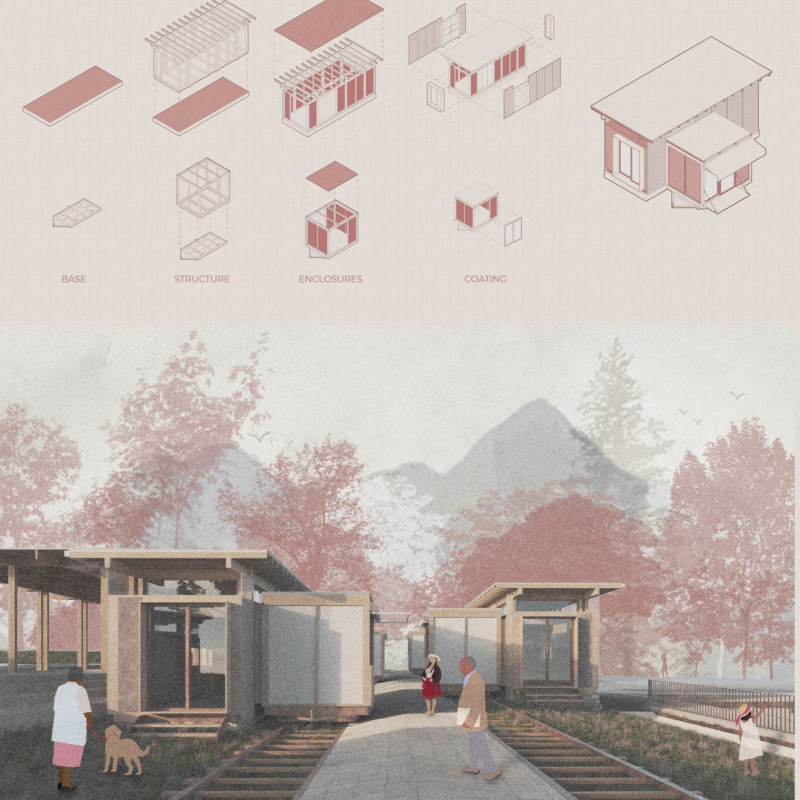5 key facts about this project
The project serves a multifaceted purpose, functioning as a [insert specific function such as residential space, public building, community center, etc.]. This function is evident throughout its design, which prioritizes user experience and accessibility. The layout is organized to enhance the flow of movement, with spaces that encourage interaction and engagement. This consideration is manifest in the careful arrangement of areas that cater to both private and communal activities, allowing for versatile use and fostering a sense of community.
A critical aspect of this project lies in its architectural details, which highlight the unique approach to materiality and construction techniques. The primary materials used in this design include concrete, which provides structural integrity and longevity; wood, incorporated for warmth and natural aesthetics; glass, capturing natural light and connections to the outdoors; steel, contributing to the building's slim profile and open spaces; and stone, which adds textural richness and a grounding element. This thoughtful selection not only champions durability but also resonates with the environmental ethos of the project.
The façade of the building warrants particular attention, as it is designed to respond to both environmental and aesthetic needs. Extensive glazing allows for ample natural light, reducing reliance on artificial illumination while promoting well-being. The strategic placement of windows and overhangs mitigates solar gain, contributing to energy efficiency. The interplay of materials on the façade creates a dynamic visual language that shifts with the changing light throughout the day, providing an ever-evolving backdrop to the project.
One of the distinguishing features of the design is its landscape integration. The surrounding site has been carefully landscaped to extend the natural environment into the built space. This approach includes the introduction of native plant species that require minimal maintenance and enhance biodiversity. Pathways are designed to facilitate movement and exploration, leading visitors through diverse outdoor spaces, while also providing areas for gathering and relaxation.
The project embodies a unique design philosophy that emphasizes a connection between indoor and outdoor environments. This is achieved through large operable windows that invite fresh air and natural ventilation, fostering a healthy indoor climate. Furthermore, the incorporation of green roofs and rainwater harvesting systems demonstrates a commitment to sustainable architecture, reflecting an awareness of the broader ecological impact.
In engaging with this project, readers are invited to explore the architectural designs and ideas that shape its identity. The architectural plans and sections provide insight into the meticulous planning process, illustrating how each element serves a purpose while contributing to the overall vision. This project is a testament to contemporary architectural practices that prioritize environmental responsibility and user engagement, blending seamlessly into its surroundings while making a statement about the future of design.
For those interested in delving deeper into the nuances of this architectural endeavor, a thorough examination of the architectural presentations will reveal the intricate layers of thought that inform the project. Engaging with the architectural plans, sections, and design elements will provide a fuller understanding of the innovative ideas that drive this project forward, offering a closer look at the harmonious relationship between architecture, functionality, and the natural environment.


























